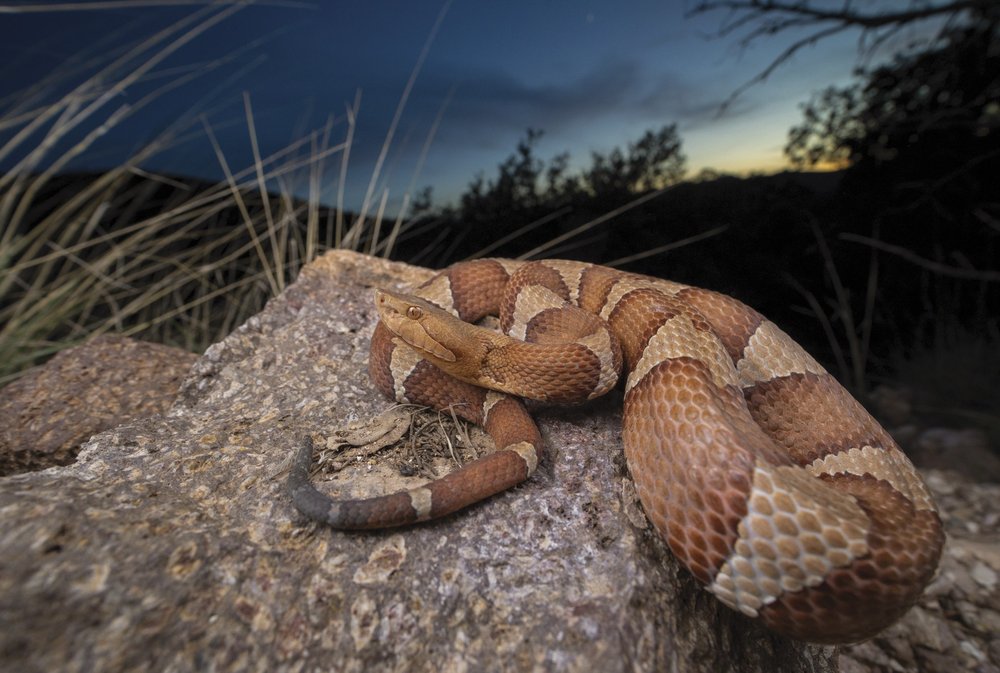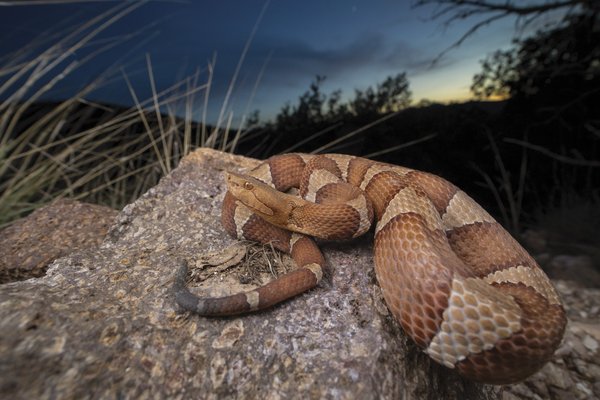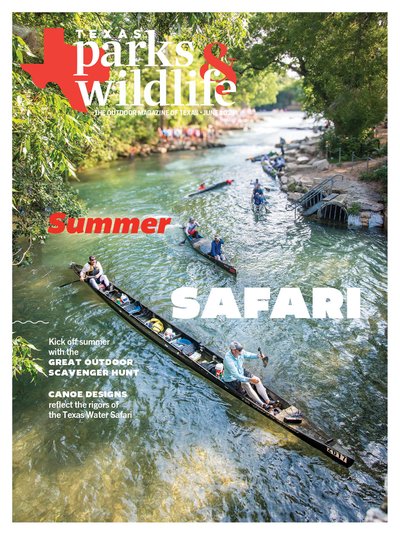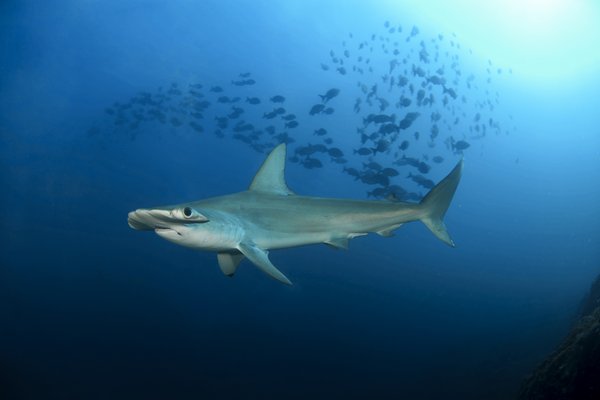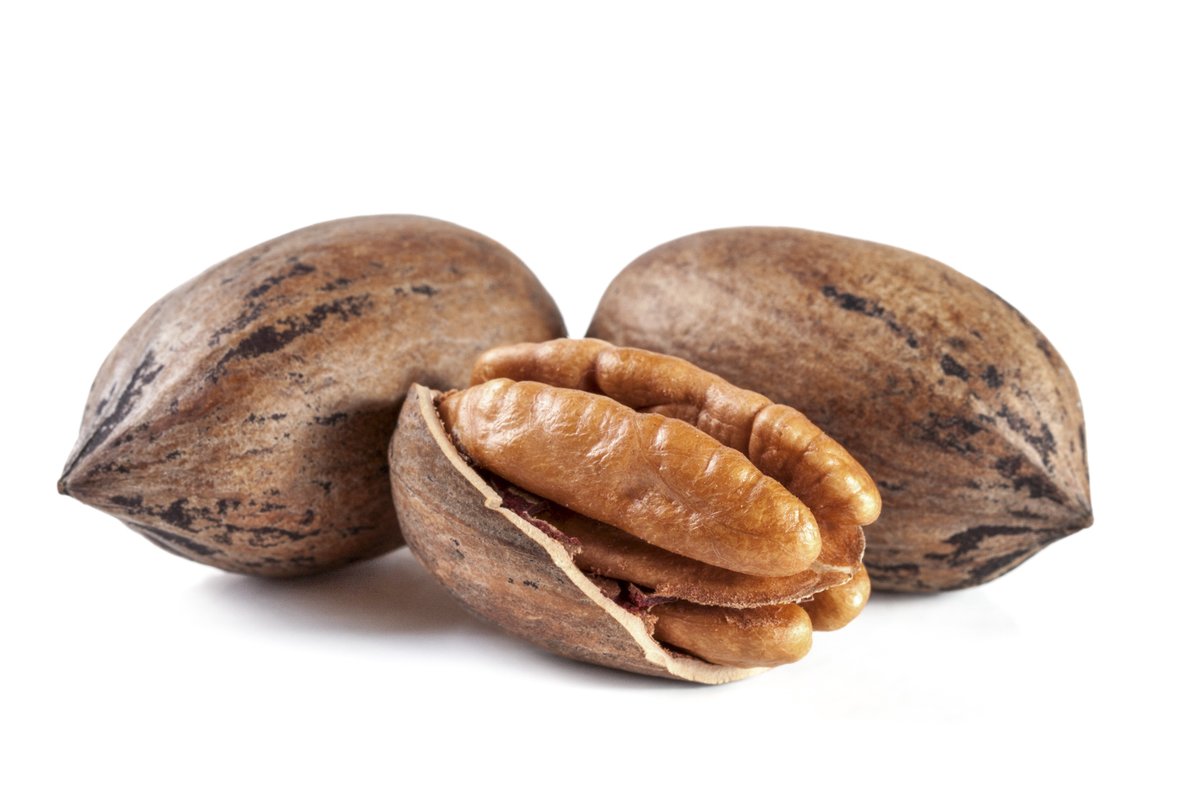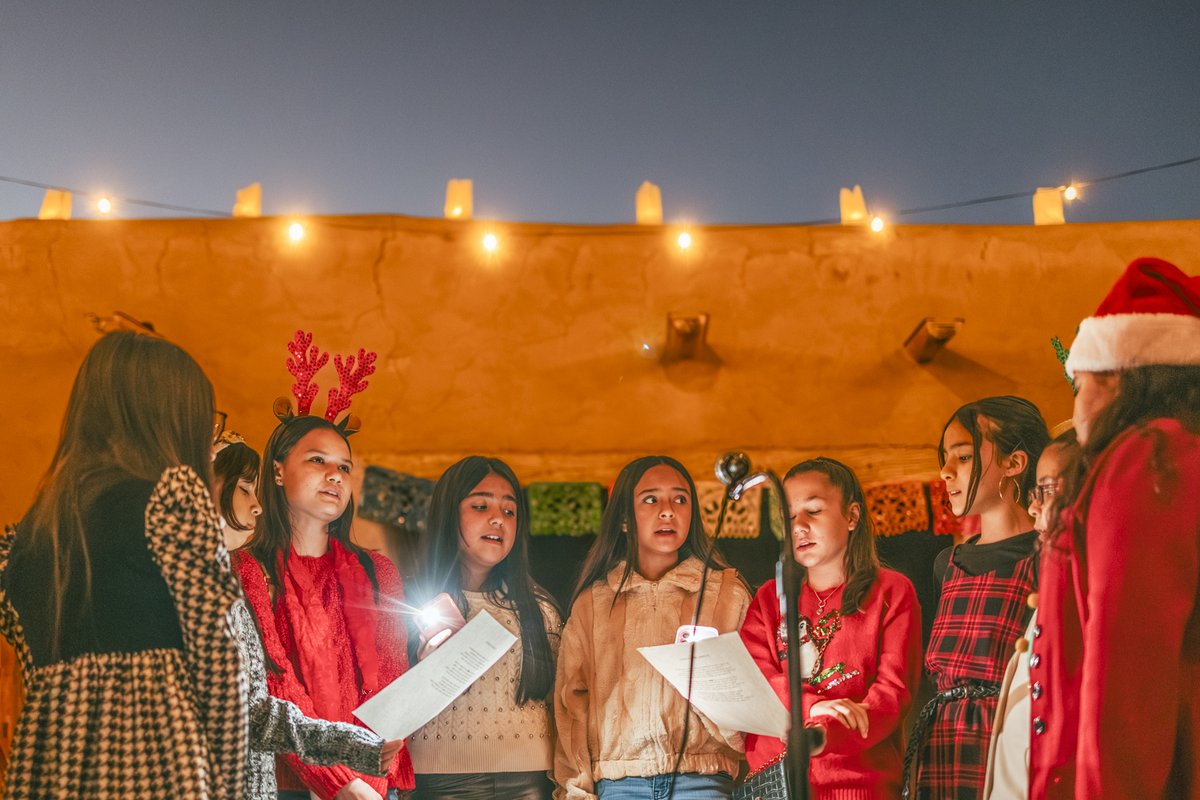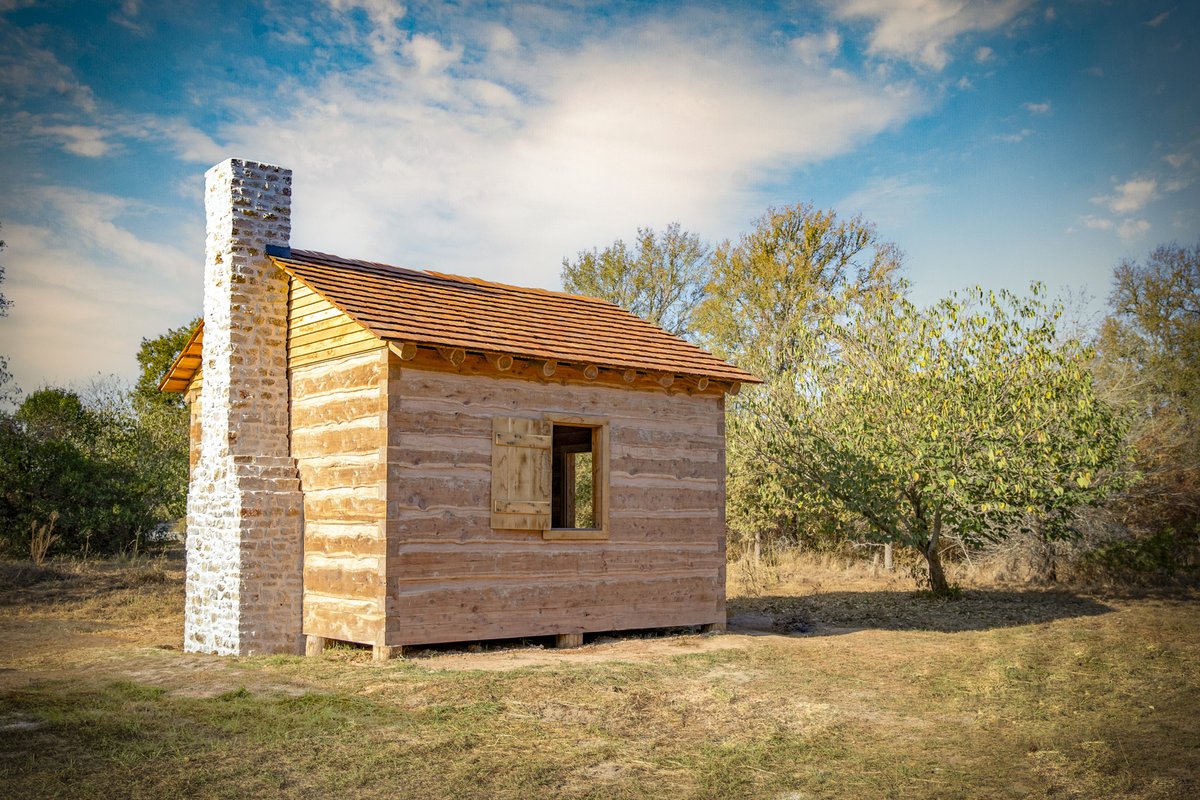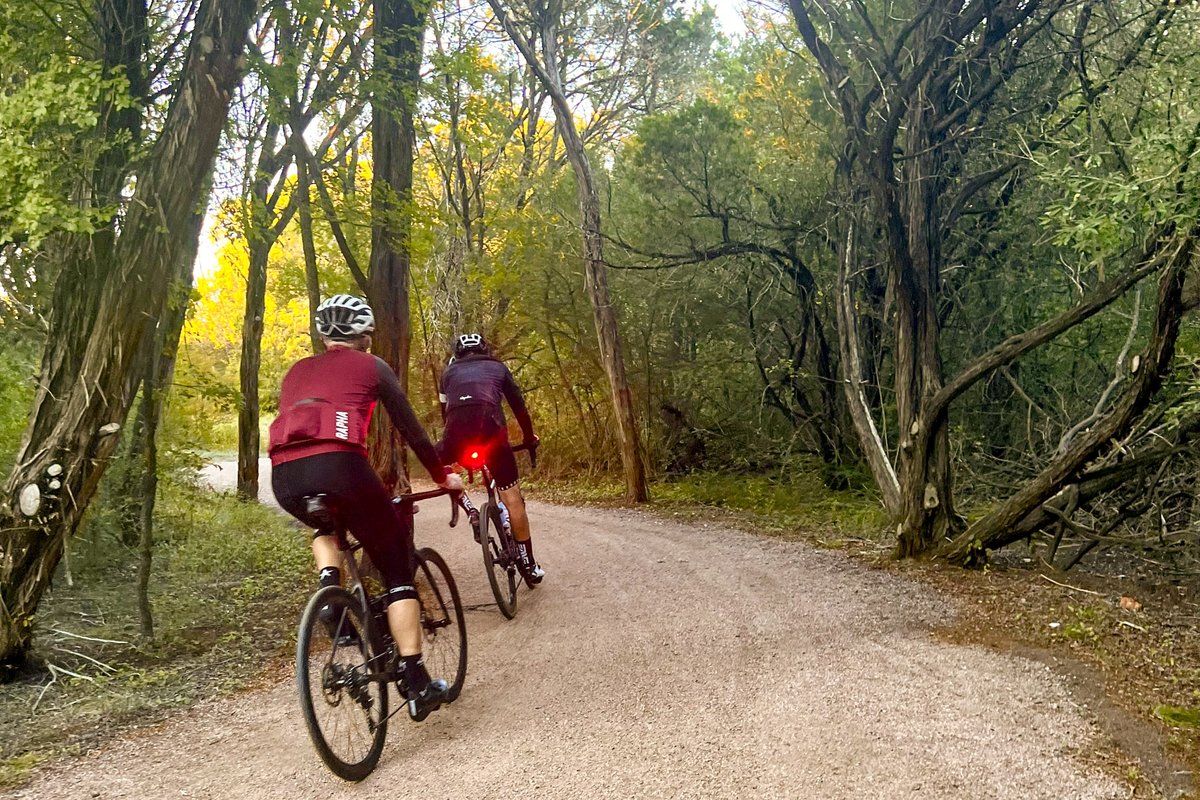It's just past 1 in the morning on a starry West Texas night, and I'm yawning in the passenger seat of my new friends' pickup. For the past four hours, Allystair Jones and his 15-year-old daughter, Evelyn, have led us on a wild snake chase. We've scoured roadcuts, paced ditches in the darkness and avoided the bugs that swarm to our flashlights. But no luck so far.
Suddenly, Jones swerves off the road and leaps out of the car, in such haste that he forgets to close the driver's side door. He runs back on the road, where I can see a fast-moving streak in the glow of his flashlight — our first snake!
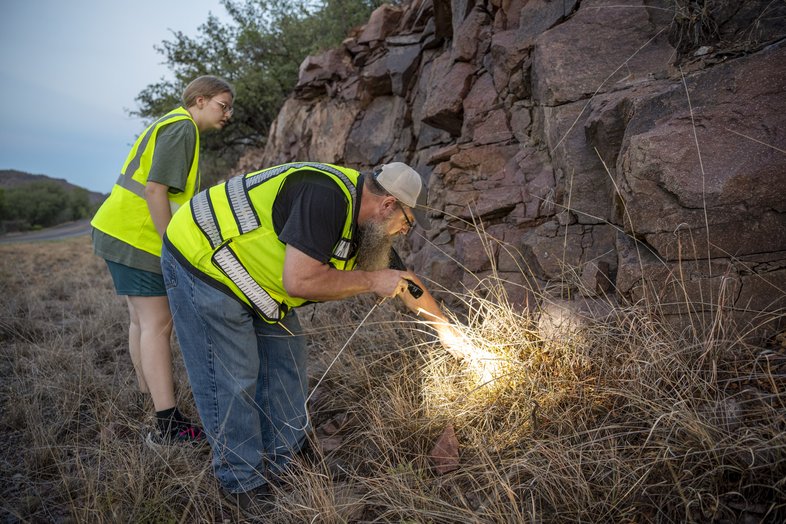
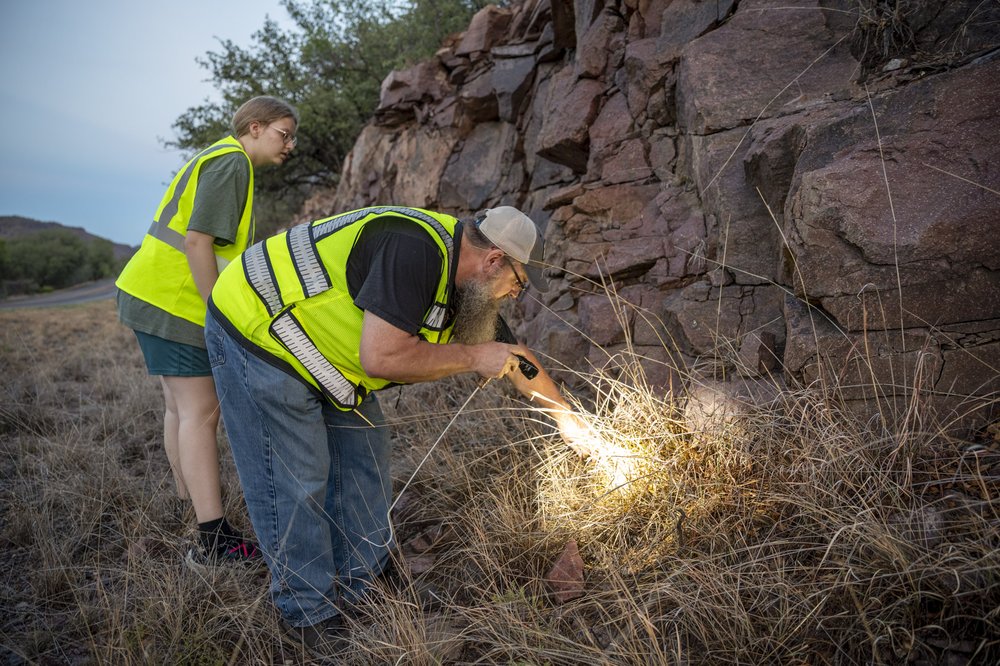
Allystair and Evelyn Jones scout for snakes.
Allystair and Evelyn Jones scout for snakes.
Jones runs parallel to the reptile, trying to angle his snake hook under her writhing body. After a few attempts, he catches the young western diamondback rattlesnake (Crotalus atrox). Once she's looped around the hook, she stays still, almost like she's posing for us. Her black tongue flicks in and out, tasting the air. Jones explains her identifying features. The uniformity of the black and white bands near her tail, coupled with two dark diagonal lines under her eyes, set this species apart from other Texas rattlesnakes.
We stand in a circle, admiring her and snapping photos, for nearly an hour. At 2 in the morning, high on the rush of adrenaline that comes with feeling the heavy bulk of a rattlesnake at the end of your hook, we head back to our hotels in Alpine.
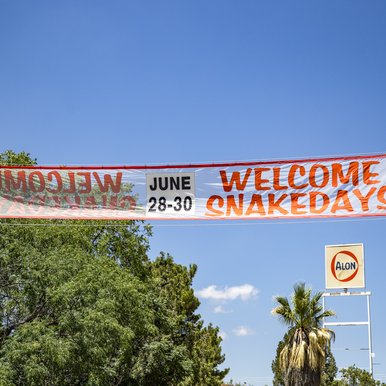
Snake Days takes place in the West Texas town of Alpine.
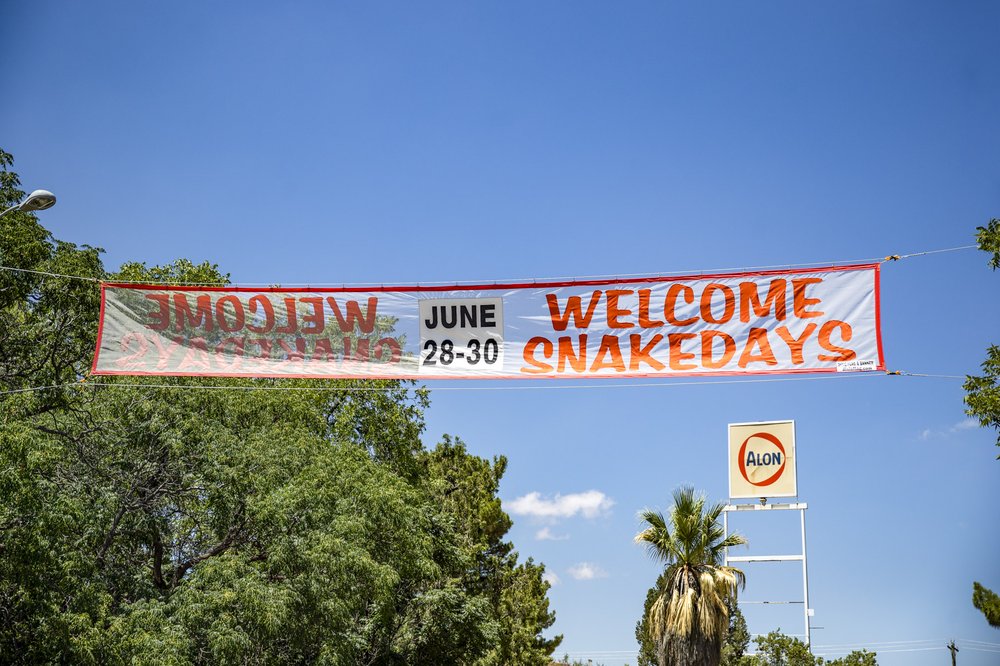
Snake Days takes place in the West Texas town of Alpine.

Alpine is also home to Sul Ross State University.
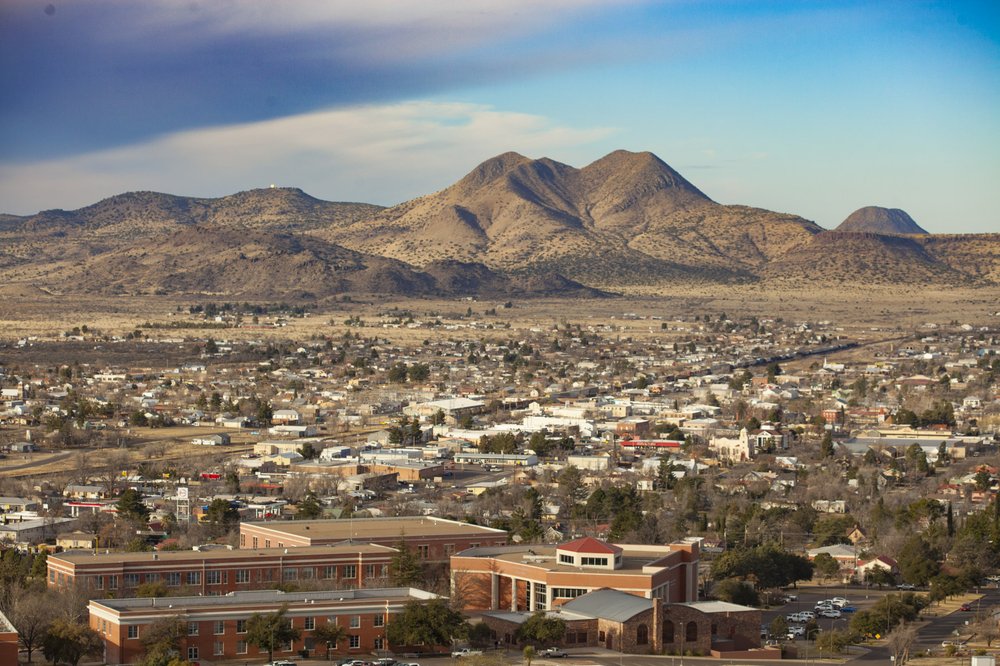
Alpine is also home to Sul Ross State University.
We're out here in the desert for Snake Days, an annual celebration of all things reptile and amphibian. As a Snake Days newbie, I learn that Snake Days should probably be called Snake Days and Nights, because most of the action happens after the sun goes down and the snakes come out.
If you do it right, by the end of the weekend you'll be dead tired, but with a head full of reptile facts and a camera roll full of photos of West Texas nightlife — lizards, centipedes, mice, vinegaroons and, of course, snakes.
Meet the Herpers
Snake Days starts off on Friday afternoon with a meet-and-greet. The Texas “herping” community — those folks into reptiles and amphibians — is quite close-knit. Many of the attendees come year after year. I was expecting a formal kick-off speech, but we find ourselves sitting around tables in the Alpine Civic Center listening to a bunch of herpetologists catching up.
Andy Gluesenkamp, former Texas state herpetologist and now the director of conservation at the San Antonio Zoo, is standing. “Smell my finger,” says Gluesenkamp, garnering some giggles and exclamations of “gross” from the group. He's been out collecting, and encountered an exciting find for Texas: a yellow mud turtle. These amphibians are capable of emitting a strong odor (some species of mud turtles are called “stink pots”).
Gluesenkamp launches into an account of the find, and also the rehabilitation of several turtles found with an infection that made it look like their brains are growing outside their heads. The group is excited to hear about it.
And this is how most conversations go at Snake Days. The humor can be a bit irreverent, but underlying it is a deep love and respect for some of our state's most misunderstood creatures. The festival, put on once a year by a group of both professional and amateur reptile enthusiasts, includes a day of lectures on Texas herpetology topics, a silent auction and two nights of self-guided herping adventures. “It bridges a gap between amateur citizen scientists, academics and state agencies because different universities participate,” says organizer Jeff Adams.
Snakes on Parade
The next morning, Saturday, we show up at the civic center again for a day packed with talks. Attendees look a little sleepy - many of them, like us, were out late the night before on the search for snakes.
There's talk of who found gray-banded kingsnakes (Lampropeltis alterna), a species much coveted by West Texas herpers. The snakes are elusive, and finding one will earn you the respect and admiration of seasoned snake-finders.
The large room is filled with tables showcasing snake merch, interactive displays (touch an alligator skin, anyone?), books and information on local conservation organizations. Vendors selling snake-catching tools offer a variety of supplies for the intrepid herper.
A table of live snakes in terrariums is a fascinating stop. I admire the colorful stripes of a long-nosed snake, and a particularly large rattlesnake shakes its tail at me.
On one side of the room is a silent auction, featuring everything from T-shirts to snake hooks to two tiny captive-born Marfa hognose snakes. The babies flick their tongues insolently as attendees peer into their containers. The talks throughout the day err on the scientific side. Grad student Frank Portillo wows the crowd with pictures of snakes with moveable fangs — the subject of his talk “Fang Evolution & Prey Selection in Burrowing Asps & Collared Snakes.”
Environmental restorationist Dusty Rhoads speaks on efforts to “rehorn Texas,” or, in other words, to help create habitat for horned lizards using native plants. Rhoads, who works for Native American Seed, a native Texas seed business, helped create the Horned Lizard Habitat Mix of native Texas prairie grasses and wildflowers specialized for the reptiles.
Keynote speaker Rachael Pikstein warns of a possible Texas invasive reptile threat, the Argentine black-and-white tegu. These friendly, dog-sized lizards make excellent pets, but they are already an invasive species in Florida because of large breeding operations getting out of control. Florida recently tightened the regulations on the lizards, so many breeders have moved to Texas. A few tegus have already been found in the wild here, and they could present a growing threat to our native species.
Between talks, attendees mingle and pore over the silent auction, which ends just before the final Snake Days dinner at 6 p.m. When 5:20 rolls around, there's a flurry of activity at the auction. I come away with a clear plastic snake hook and a T-shirt featuring a grinning crocodile and text that reads “Hard Croc Cafe.”
The Days Ahead
As with many animals in Texas, snake populations here have seen better days. Urbanization, habitat fragmentation and other factors have led to dwindling populations. It goes without saying that snakes don't always get the best PR, and winning protections for reptiles is more difficult than protecting cuter, cuddlier, charismatic megafauna. Throughout the festival, snake enthusiasts bounce ideas off each other of how to best facilitate snake conservation.
“They got into the mechanics of who and what is actually going on to conserve this resource,” says Jones. “You don't go up and say, ‘We're going to shut down Rattlesnake Roundup’… You've got to find a workaround.”
Organizer Adams' personal workaround is to focus his efforts on quail conservation, because quail thrive in the same habitats as many species of snakes.
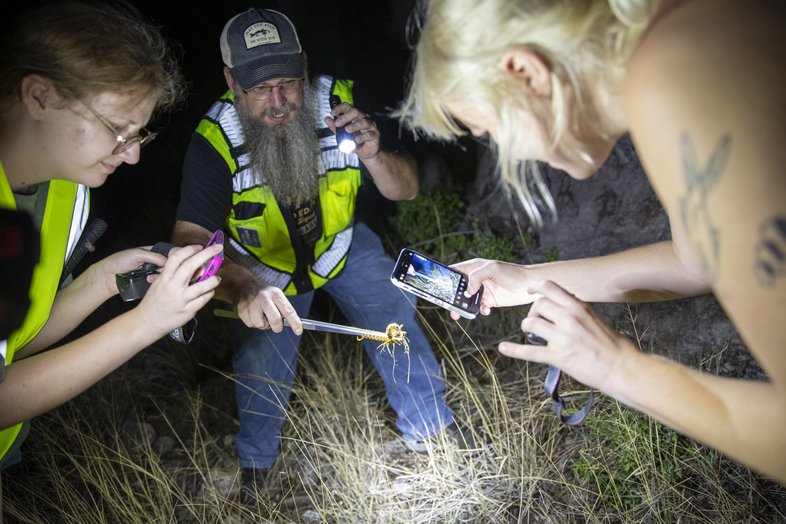
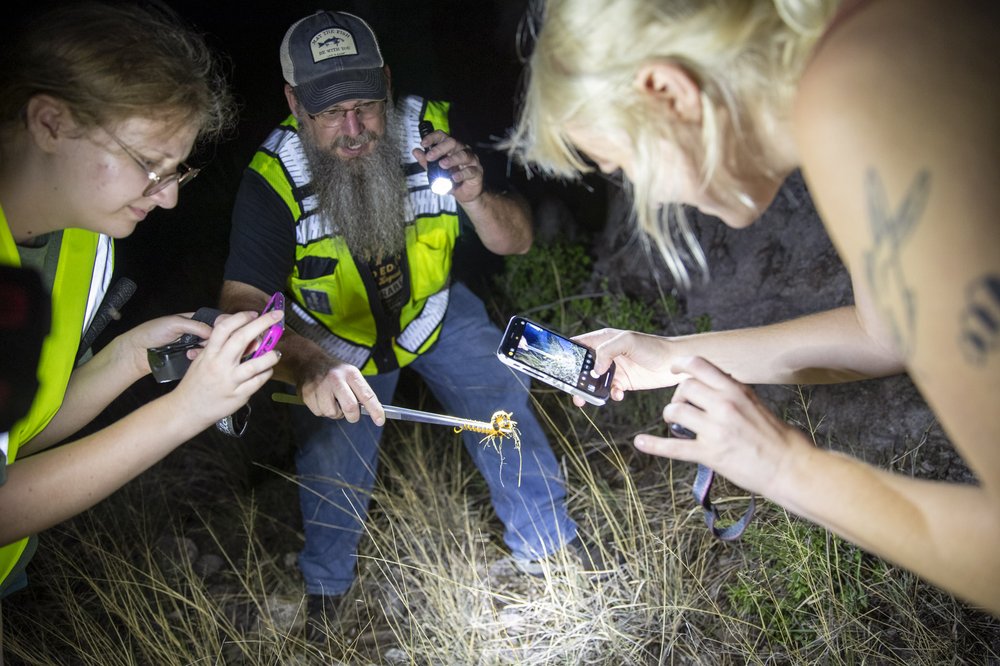
Herpers examine a non-snake find.
Herpers examine a non-snake find.
Farewell Expedition
On our last night, we meet Frank Portillo, who gave the talk on snakes with moveable fangs, out at the roadcuts near McDonald Observatory for a final herping trip. With him is his dog Nimbus, who he's trained to sniff out gray-banded kingsnakes in the wild.
We stand in the darkness as Portillo brings out two boxes from his truck, each containing a gray-banded kingsnake. They're beautiful, each bearing distinct patterns of gray, black, white and orange. He lets us hold them, their sinewy bodies winding around our hands and arms. They feel colder and heavier than I expected.
It's a lucky thing, being able to hold the special species — and being out here herping at all. I feel a rush of gratitude to the people who put on Snake Days, allowing me passage into this foreign world of reptiles and amphibians. Above us, wind rustles the junipers, and the West Texas night sparkles with stars.
Attend this Year's Festival
July 18-20
While you're in Alpine...
Browse Front Street Books, a fabulous local bookstore with plenty to read about the plants, animals and culture of the region.
Visit the Museum of the Big Bend, located on the campus of Sul Ross State University.
Enjoy fresh sourdough, delicious pastries and tasty lunch options at the Bread Garden Bakery.
How to Herp
Get your permit
In Texas, you need a hunting license with a herp stamp to hold or photograph reptiles and amphibians.
Go with a friend
The first time you herp, find a buddy to take you.
Prepare
Brush up on the snakes in your area, and acquire the necessary equipment (closed-toed shoes, snake hooks, possibly clear containers if you want to observe your find up close).
Find a cut
Roadcuts are easily accessible herping grounds. Look for cuts with exposed rock faces with cracks, loose rocks or other places for snakes to hide.
Safety first
Wear bright, reflective vests to make sure you're visible to passers-by.
Think before you post
Posts about rarer or highly coveted species, such as milk snakes or gray-banded kingsnakes, could draw poachers.
